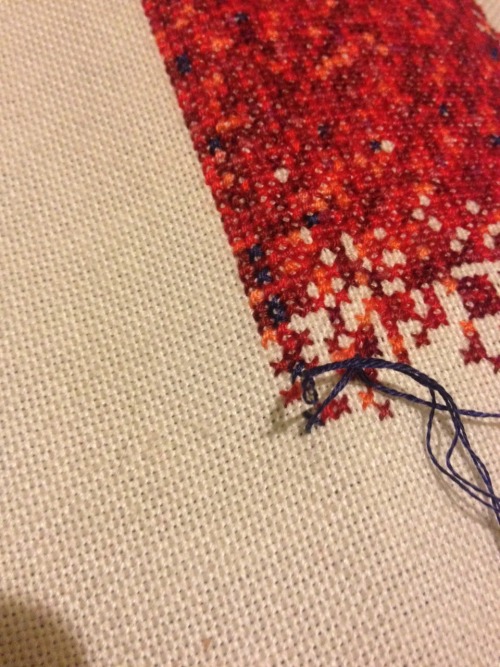This is the main tumblog of Silvie Kilgallon. I'm a conceptual artist and my work is largely influenced by my academic interests in classics, ancient history, translation, and philosophy of language. This blog details conceptual, casual and personal projects on which I am currently working. To see the Stitched Iliad project, please check out the Stitched Iliad blog below.
154 posts
And This Is The Point Where I Have To Accept That I Need To Write Out The Next Page Of Pattern. (The

And this is the point where I have to accept that I need to write out the next page of pattern. (The orange T is theta, the dark red T is Tau).
-
 applebutterbomb liked this · 9 years ago
applebutterbomb liked this · 9 years ago -
 high-functioning-sociotter reblogged this · 9 years ago
high-functioning-sociotter reblogged this · 9 years ago -
 inariedwards liked this · 9 years ago
inariedwards liked this · 9 years ago -
 faintpress liked this · 9 years ago
faintpress liked this · 9 years ago -
 galatea-wannabe liked this · 9 years ago
galatea-wannabe liked this · 9 years ago -
 raeda-in-fossa-est liked this · 9 years ago
raeda-in-fossa-est liked this · 9 years ago
More Posts from Theclassicistblog

Unsurprising fact: lots of lines in the Iliad start with των. Or occasionally, for variation, τωι.* You can tell which lines they are in this photo because ω is currently the only letter I'm using a blue for. So every line that has a blue second stitch is των (or τωι). *It's actually τω with an iota subscript, but throughout the whole project I'm reverting them back to full iotas.





Differences achieved by slipping knitwise/purlwise for an SSK decrease, for anyone who has ever wondered. Top left is traditional SSK - both stitches slipped knitwise. Top right is SSK with both stitches slipped purlwise. Bottom left is first stitch slipped purlwise and second slipped knitwise. Bottom right is first stitch slipped knitwise and second slipped purlwise. You can see that the traditional SSK gives the smoothest line. But that might not always be the best style for a pattern. If you're working something that emphasises corners and angles, try one of the other three. SSK with knitwise then purlwise completely hides the second stitch being decreased so it gives a simple step pattern in the decrease. The other two allow a leg of the second stitch to show through so could work with designs where you want to emphasise complexity or a 2-1 rib design, etc.
Something else amazing I didn’t realise I needed in my life.
Classics craft workshop at KCL
King’s College London are hosting an event on the 16th October 2015 called ‘Craft process & cultural response: making & thinking about making in Greco-Roman antiquity’ There’s a choice of a mosaic workshop and a textile workshop, followed by an evening talk.
It’s free but you do have to register (which you can do through the link above). I already signed up for the textile workshop (shocking, I know).
I’m a huge supporter of alternative approaches to classical material - especially craft approaches. There are experiences you gain from engaging in a making process that you just can’t pick up from translating texts or reading texts, looking at pictures, or reading academic research. It’s an approach that I’d recommend anyone interested in classics tries at least once. This event looks pretty good to me, so, y’know, if classics/craft is your thing and attending seems doable to you, maybe register for it. :3
